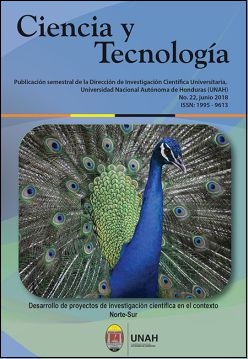Analysis of the hydrolyzed protein extracted from the curvina tissue and tilapia in the shrimp feed
DOI:
https://doi.org/10.5377/rct.v0i22.6437Keywords:
attractiveness, fish hydrolysate, balanced feed, productive performanceAbstract
The Honduran shrimp industry registers a production area of 22,748 hectares that demand an annual consumption of 80,000 metric tons of feed; this is a production input with a high cost to the producer. During the culture, fish such as corvine and tilapia grow simultaneously with shrimp and because of their size are not used. It is considered that one of the most economical methods to take advantage of these resources is fish hydrolysate. The objective of the study was to evaluate the effect of curvina hydrolysate and tilapia on the balanced feed of the productive performance of shrimp. Nine 37 L aquariums were installed planting 12 shrimp (with initial weight of 3.6 g), hydrolyzed proteins were extracted from curvine and tilapia tissues, and three treatments were used. The treatments consisted in a.) feeding the shrimp with the balanced food plus the curly hydrolyzed extract, b.) feeding balanced food plus tilapia hydrolysate and c.) feeding only balanced food. Each treatment was managed in triplicate proportions. The greater attractiveness was observed in the shrimp fed with the balance plus the tilapia hydrolysate (P <0.0001). The shrimp are more voracious in the morning than in the afternoon. The growths, feed conversion factor and specific rate of growth (P <0.001) were more favorable in the animals fed tilapia hydrolysate. The best survivals were observed in the shrimp that consumed the fish hydrolysates.
Downloads
1259
Downloads
Published
How to Cite
Issue
Section
License
© Revista Ciencia y Tecnología
Authors who publish in this journal accept the following conditions: In accordance with the legislation of copyright, Revista Ciencia y Tecnología, recognizes and respects the moral right of authors, as well as the ownership of the patrimonial right, which will be ceded to the magazine for its diffusion in open access in printed version and in digital format. By being part of multiple indexers, databases and reference systems, the articles published by Revista Ciencia y Tecnología will be visible and will be downloaded from these websites, indicating, in all cases, the authorship of the articles, the date of publication and the number of the journal to which they correspond.




